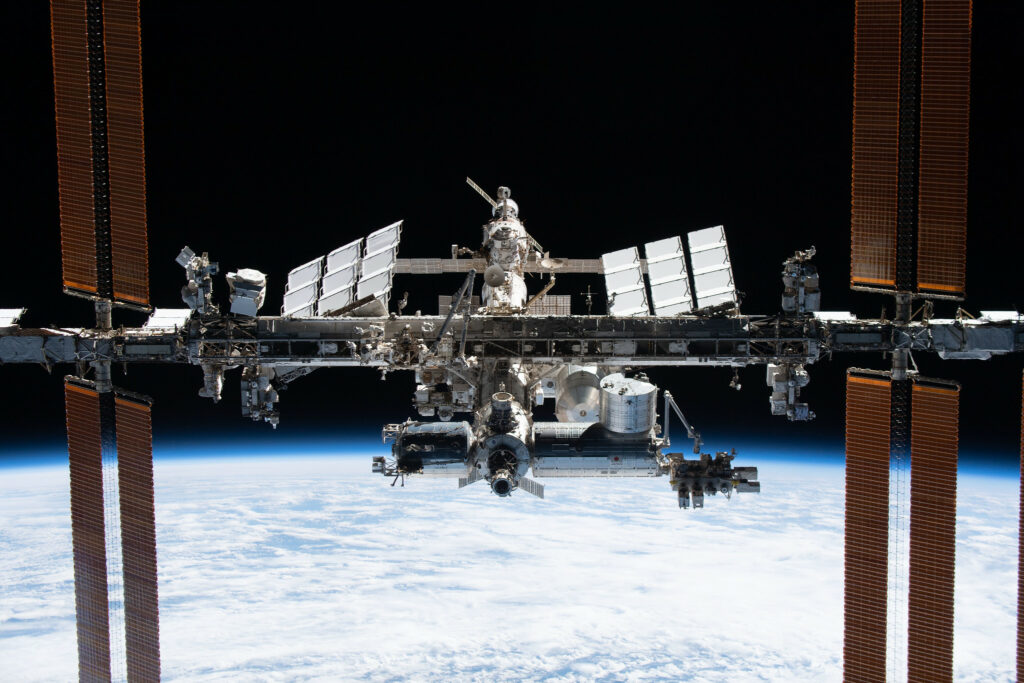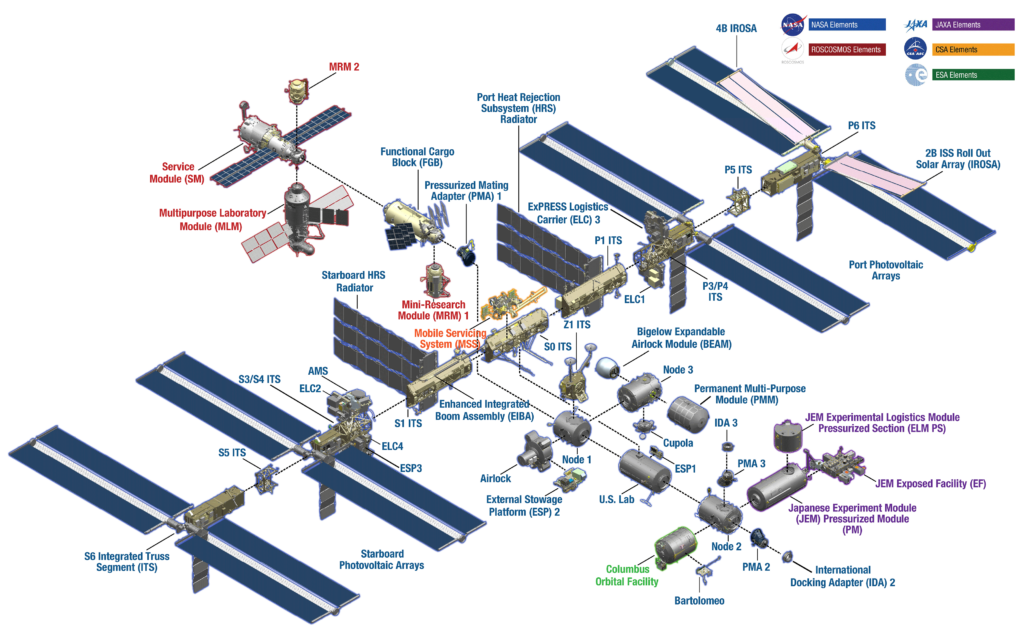After the beginning of the large-scale Russian aggression against Ukraine, the International Space Station (ISS) actually remained the only technological thread connecting Russia with Western countries. But it is already obvious that in the near future it will also be cut.

Over the past weeks, Dmitry Rogozin has made a number of statements about the future of the ISS. If we wade through the mixture of rudeness and threats typical for the head of Roscosmos, they can be reduced to the fact that Russia has decided to leave the station. Most likely, this will happen in 2024, when the current intergovernmental agreement on the work of the ISS expires. In turn, it is no secret that NASA plans to operate an orbital outpost until 2031. All this raises a legitimate question — will the ISS be able to survive after Russia leaves, or is the station doomed?
Russian segment of the ISS
So, before we start talking about the future of the ISS, it is necessary to make a small digression and talk about its general structure. This is important for a better understanding of the situation.

In fact, the ISS is a combination of two space stations, called the American (it includes all Western modules) and the Russian segment. The last one consists of six sealed compartments: the functional Cargo Block “Zarya” (dawn), the service module “Zvezda” (star), the small research module “Poisk” (search), the docking cargo “Rassvet” (dawn), the nodal “Prichal” (berth) and the scientific “Nauka” (science).
In percentage terms, the Russian segment accounts for about 17% of the total mass of the station and about 27% of its sealed volume. Meanwhile, it should be taken into account that even though the Zarya module is considered part of the Russian segment, it is legally the property of NASA. Without it, Russia’s share decreases to about 12.5% of the ISS mass and 20% of its volume.
Division of responsibilities on the ISS
Although Russia’s “quantitative” contribution to the ISS is much smaller than the Western one, dry figures do not solve everything. The fact is that the segments of the station do not live separately — they are closely interconnected and perform the tasks necessary for the successful functioning of the entire complex. Some of them are duplicated, some are not.

So, each of the segments is equipped with its own life support and orientation system. The same goes for the scientific part. Each segment has its own modules designed for conducting research and experiments. But if we talk about energy, then its main supplier is the American segment of the ISS. Its output is enough not only to support its own needs, but also for Russian colleagues.
In turn, the Russian segment is almost exclusively responsible for maintaining the ISS orbit and performing space debris evasion maneuvers. For this purpose, the engines of the Zvezda module are used, as well as the Progress supply spacecraft. On average, about 7.5 tons of fuel per year is spent for these purposes.
Replacement of Russian engines
It is the dependence of the ISS on Zvezda and Progresses that is the main problem associated with the upcoming departure of Russia. In its current state, the American segment of the ISS is able to successfully perform all the basic functions necessary to maintain the operation of the complex. But it can’t lift its orbit. And without regular maneuvers, the station will enter the Earth’s atmosphere and die within about a year.

This situation was not always the case. At the time of the shuttles, NASA used the engines of cruise spacecraft to raise the orbit of the ISS. European ATV supply vessels had a similar capability. The problem is that the last shuttle launch took place in 2011, ATV — in 2014. Since then, NASA has transferred full control over the orbit of the station to Roscosmos — and now it is reaping the fruits of its decision.
But does this mean that without Russia, NASA will have no opportunities to maintain the ISS orbit? Fortunately, no. The aerospace administration has spare options. One of them is the Cygnus supply spacecraft. In the near future, NASA plans to conduct an experiment on the use of its engines to correct the orbit of the ISS.

At the same time, the success of this undertaking will not mean an instant solution to all problems. First, NASA will have to significantly increase the number of Cygnus launches. Secondly, the question arises about the carrier. Previously, an Antares rocket was used to launch the spacecraft, the first stage of which was manufactured by Ukrainian enterprises. But it is obvious that in the conditions of war, Russian bombing and the destruction of economic chains, the production of new stages in the near future will be impossible. So, when the stages already delivered overseas run out, NASA will have to find a rocket to replace Antares. Perhaps it will be a new carrier Vulcan or Falcon 9.
In addition to Cygnus, the CST-100 Starliner spacecraft should also have the ability to raise the ISS orbit. So far, its commissioning is delayed due to technical problems. But if the launch scheduled for May is successful, in the future Starliner will be able to partially assume the responsibilities of maintaining the ISS orbit. It is also known that NASA is holding informal consultations with SpaceX about the possibility of making changes to the design of Dragon spacecraft or even creating a separate spacecraft that can be used to solve this problem.
Problem of 2024
If we summarize all of the above, it is obvious that with sufficient funding and the necessary efforts, the United States is quite capable of independently maintaining the ISS orbit by 2024. And since both NASA and the American aerospace industry are interested in the station continuing its existence until the end of this decade, there is no doubt that this task will become a priority and will be solved.

Of course, all this is true for the situation with the “cosmic divorce” in 2024 and the advance notification of the parties. If Russia spits on all existing treaties and agreements (and this is not the first time for it) and decides to stop holding the ISS orbit without warning, then the situation will become much more complicated. And it is possible that NASA will not have time to save the station.
However, several factors play against this option. Russia’s immediate withdrawal from the ISS will actually bury its manned cosmonautics, which has always been an important part of its propaganda narrative. Without the ISS, both Soyuz and Progress will have nowhere to fly. And the Celestial Empire will not help Russia in any way in this matter, because the inclination of the orbit of the new Chinese station physically does not allow launching manned missions to it from Russian cosmodromes.
The current Russian plan is to create an ersatz replacement for the ISS in the form of the ROSS national station. Its base block would be a converted Scientific and Energy Module (NEM), which was previously planned to be included in the ISS. But even in an ideal scenario, its launch will take place no earlier than 2025. This forces it to stay on the ISS for now. In turn, NASA gets enough time to prepare for its departure.
Scenarios of “Cosmic Divorce”
So how will Russia’s departure from the ISS take place? There are three main scenarios. The first one assumes that Russia is simply mothballing its segment of the station. This is the easiest way that even allows them to earn. In the end, Roscosmos can always try to lease its segment to someone. Perhaps even with payment in Russian rubles.

The other option is much more complicated and expensive and involves the physical disconnection of all Russian modules. This operation will require many months (if not years) of preparation and a lot of technological operations on the part of the station crew. The astronauts will have to cut the cables connecting the two segments of the ISS, block the pipelines, and close the hatches. In fact, this can be compared to a complete amputation of a limb.
The intermediate third scenario assumes that only the two newest Russian modules “Nauka” and “Prichal” will be disconnected from the ISS, while the rest will be mothballed. The main difficulty is that after the spontaneous activation of the engines in 2021, “Nauka” has completely exhausted fuel reserves, and the design of the tanks does not allow them to be refueled.
Consequently, Russia will have to launch a re-equipped Progress, which will carry the “Nauka” from the ISS to the NEM. Then they will dock and the Russian authorities will proudly announce the creation of their own orbital station. Of course, its capabilities will not be in any way comparable to the capabilities of the ISS (most likely, the station will not even have a permanent crew) — but who of the Roscosmos specialists will dare to say this publicly?
In conclusion, we note that all the forecasts described by us are based on common sense and technical capabilities of space players. But, it has long been obvious to all adequate people that the Russian authorities live in their own picture of the world, which has little to do with reality. So, although from the point of view of logic, the ISS should survive and continue its existence, this does not guarantee that in reality everything will happen that way. Depending on the further course of the war, we may well find ourselves in a situation where the eighth wonder of the world can be brought to the brink of death simply on the principle of “to spite the pindoses”. Unfortunately, at least for some time, all fans of cosmonautics will have to live with the awareness of this far non-zero possibility.
Follow us on Twitter to get the most interesting space news in time
https://twitter.com/ust_magazine

